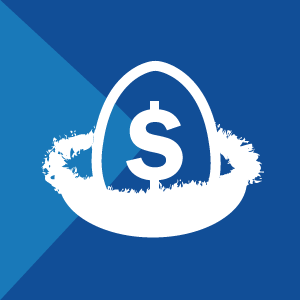
Experts estimate that Americans will need 70 to 90 percent of their preretirement income to maintain their current standard of living when they stop working. Small business owners who offer retirement savings plans play a vital role in helping employees build a solid financial foundation for the future. In addition, a retirement plan offers tax savings to your business and is a valued benefit that can help you attract and retain qualified employees in today’s competitive job market.
Starting a retirement plan can be easier and more affordable than you may think, and there are a number of viable programs specifically designed for small businesses. Here are a few of the most popular options to consider:
Traditional 401(k)
The traditional 401(k) is probably the most widely known retirement plan. Any employer with one or more employees can start one, but this plan is generally most appropriate for companies with 20 or more employees.
401(k) plans enable a business owner and his or her employees to make consistent, tax-deferred contributions during the length of their careers. These plans not only have higher contribution limits than most other options, but offer more choices to help you manage business costs. You can choose to match employee contributions or not, provide a vesting schedule, or enable penalty-free access to funds via a loan if an emergency arises. 401(k) plans also allow for “catch-up” contributions after reaching the age of 50.
For small businesses and employees concerned about higher tax rates in the future, the Roth 401(k) enables participants to have their contributions taxed up front, but withdrawals in retirement are tax-free, earnings and all. This can be a big help in managing your tax situation over time.
There is also a Self-Employed 401(k) plan for business owners with no employees other than a spouse. This option is available to sole proprietors, partnerships, C corporations, and S corporations.
Safe Harbor 401(k)
A Safe Harbor 401(k) plan is intended to encourage plan participation among rank-and-file employees and to ease a business owner’s administrative burden by eliminating the IRS tests required with a traditional 401(k) plan. A safe harbor 401(k) plan allows employees to contribute a percentage of their salary each paycheck and requires employer contributions. The mandatory employer contribution is always 100 percent vested. This plan is ideal for businesses with highly compensated employees whose contributions would be limited in a traditional 401(k) plan.
SEP IRA
Simplified Employee Pensions (SEPs) are another popular retirement plan choice for small businesses. SEPs offer a contribution limit that is similar to a 401(k), but they do not include all of the benefits of a 401(k) plan. It’s important to know that employers make 100 percent of the contributions to a SEPs account, and these dollars are immediately vested for the employee. Contributions don’t have to be a set amount or percentage, and any contributions you make to your own or your employees’ SEPs are tax deductible as business expenses.
Unlike a 401(k), SEPs do not offer a Roth or loan option or catch-up contributions for those over age 50. However, these plans do not have the added burden of IRS tests and reporting that 401(k) plans do.
SIMPLE IRA
With a Savings Incentive Match Plan for Employees, or SIMPLE IRA, both the employer and employee can contribute to the plan. The employer must match, and matching is vested immediately. The employee contribution limit is lower than a 401(k), and the catch-up for those over 50 is also less. A SIMPLE IRA does not have Roth or loan options, and like the SEP there are no IRS tests and reporting requirements.
One drawback of this plan is that it is formatted for very small businesses. If your business grows beyond 100 employees, you may need to consider switching to another retirement plan.
Payroll Deduction IRA
If you decide not to implement a retirement plan, you can still help your employees by allowing them to contribute to an IRA through payroll deductions. With this type of arrangement, the employee makes the decision about whether, when, and how much to contribute to the IRA. Eligible employees often wait until the end of the year to set aside the money, only to find that they don’t have sufficient funds to contribute. Payroll deductions enable employees to save smaller amounts each pay period. Payroll deduction contributions are tax-deductible by the employee to the same extent as other IRA contributions.
These and other programs can provide tax advantages as well as help business owners and employees save for retirement. The choice of plans is yours, depending on what you want to accomplish with your plan and how much flexibility you need. For help understanding your options, visit the IRS website or speak with a financial professional.
Working Capital Financing is a few clicks away.
Apply online and get started today >
Summit Financial Resources specializes in working capital financing for small to medium-sized businesses that need increased cash flow. We provide working capital financing through invoice factoring, asset-based lending, inventory lending, and equipment financing.
